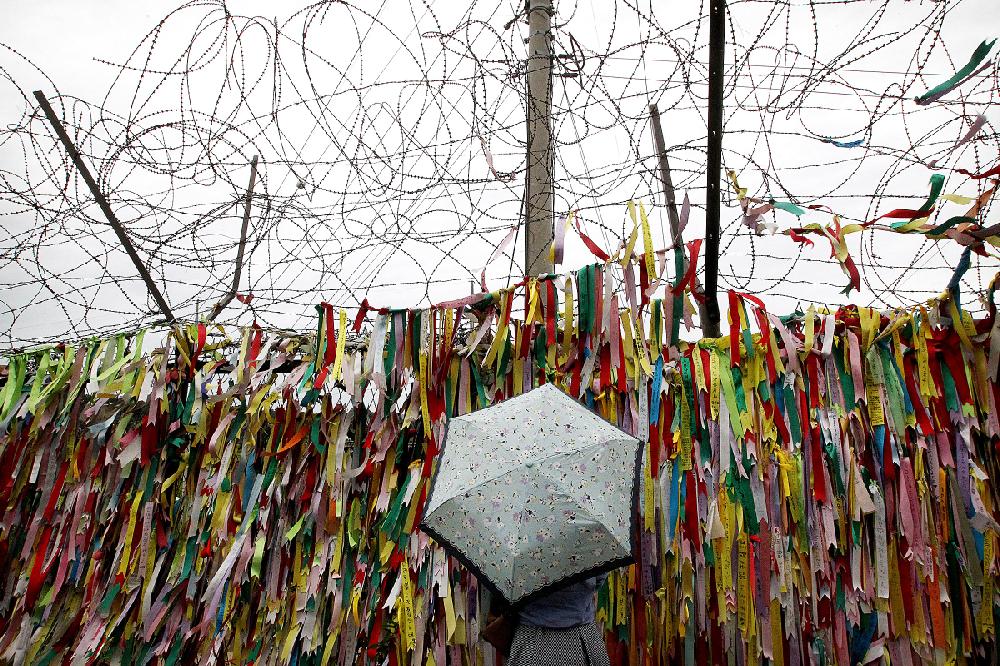- California Assembly OKs highest minimum wage in nation
- S. Korea unveils first graphic cigarette warnings
- US joins with South Korea, Japan in bid to deter North Korea
- LPGA golfer Chun In-gee finally back in action
- S. Korea won’t be top seed in final World Cup qualification round
- US men’s soccer misses 2nd straight Olympics
- US back on track in qualifying with 4-0 win over Guatemala
- High-intensity workout injuries spawn cottage industry
- CDC expands range of Zika mosquitoes into parts of Northeast
- Who knew? ‘The Walking Dead’ is helping families connect
Korea reunification would create $8.7 trillion economy: gov’t think tank

A visitor reads messages on ribbons wishing for the reunification of the two Koreas at the Imjingak Pavilion near the border village of Panmunjom, which has separated the two Koreas since the Korean War, in Paju, South Korea. After more than 40 hours of talks, North and South Korea pulled back from the brink Tuesday with an accord that allows both sides to save face and, for the moment, avert the bloodshed they’ve been threatening each other with for weeks.(AP Photo/Ahn Young-joon)
By Brian Han
The Korean peninsula has been split into two countries since 1948. Since 1950, North and South Korea have technically been engaged in a state of war.
Though numerous social and political barriers still exist today, the reunification of the two countries could very well yield an $8.7 trillion economy according to a South Korean government think tank, UPI reported.
The Korea Institute for International Economic Policy (KIIEP) shared its projections on Wednesday saying that if the South absorbed the North, its economy would increase by 1.7 times its forecasted growth by 2055.
Much of the criticism towards reunification stems from the potential cost. The KIEEP produced a figure between $50 billion to $6 trillion. The vast difference between the two numbers goes to show how many variables are at play if the two governments agreed on such a move.
The think tank proposed a two-stage plan that would supposedly yield a healthy growing economy.
First off, the reunification would occur between 2016 and 2035 in which the two sides would still function mostly independently with the North receiving help from the South to speed up its growth.
The next step would occur between 2036 and 2055. At this point the two countries would begin the merging of governments with citizens being able to freely move across the entire peninsula.
Keep in mind that all of this only works with little to no resistance from Pyongyang and the existing North Korean regime.
South Korean President Park Geun-hye referred to reunification as a “jackpot” back in January of 2014.
















